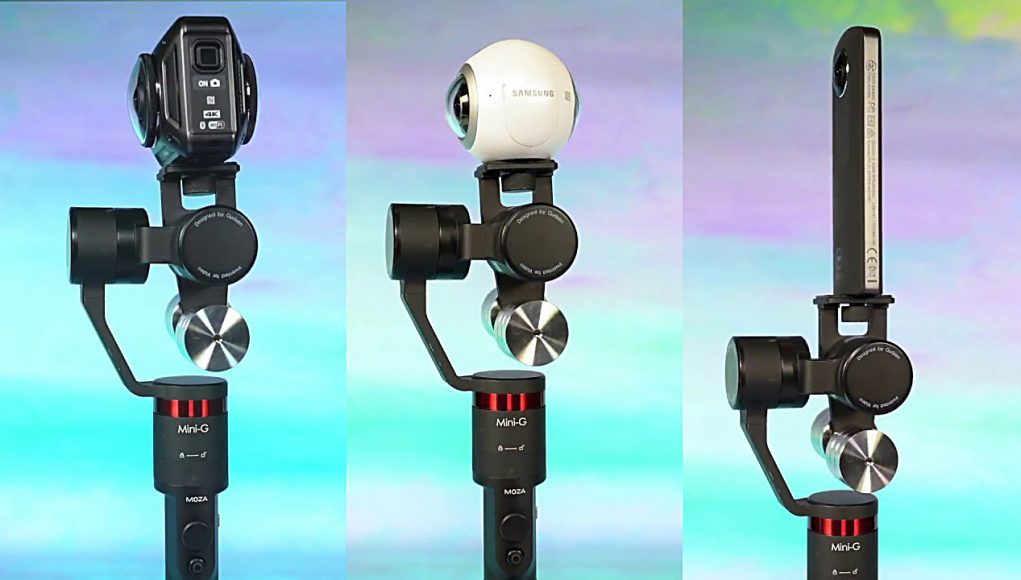The Guru 360° is the first 3-axis gimbal designed specifically for 360-degree cameras. Adding to the flexibility of the MOZA interchangeable gimbal system, the unit works with all lightweight 360-degree cameras with minimal obstruction to the field of view.
360-degree or spherical video has played a significant role in the growth of modern VR, introducing the concept of ‘free-look’ to the mainstream consumer through social media, thanks to 360 video support on platforms like YouTube and Facebook. Accessible on even the most inexpensive, Cardboard-style VR headsets, combined with the advent of capable entry-level cameras like Samsung’s Gear 360 and Ricoh’s Theta S, 360 video’s popularity is growing rapidly.
Unfortunately, the limitations of current 360 capture mean that, viewed in VR, there are several optical inaccuracies at play, even when using more advanced stereoscopic hardware; some would argue that it doesn’t really qualify as VR. As such, some footage can be quite uncomfortable, causing nausea. Video stability is a major culprit, and 360 cameras exacerbate the problem of handheld capture severely. Watching footage of someone walking with a 360 camera can be a horrendous experience in a headset.
Major advancements are being made in software, such as the real-time stabilising feature coming to Insta360 devices, but the most reliable hardware solution is a motorised gimbal, which actively stabilises the shot. Typically these are designed with smartphones and action cameras in mind, meaning that parts of the mechanism obstruct a chunk of a 360 camera’s field of view.
The Guru 360° by GimbalGuru, introduced in this video, is the first 3-axis gimbal designed specifically for 360-degree cameras, minimising any obstructions. It supports lightweight 360 cameras like the Gear 360, Nikon Keymission, Ricoh Theta S and Kodak Orbit, correcting unwanted movement, rotation, roll, and horizon drift, offering ‘follow’, ‘lock’, and ‘head lock’ filming modes. Viewing footage captured using this device with a VR headset should be considerably more comfortable, and should improve image quality, with cleaner stitching and reduced artifacting.
Designed around the proven MOZA interchangeable gimbal system, the handle is compatible with the Mini-C and Mini-G heads, meaning users can easily upgrade their gimbals to support 360 cameras, smartphones and action cameras. The Guru 360° is currently available for order on OwlDolly.com and GimbalGuru.com for $299, a limited first run stock, shipping in the middle of March.







